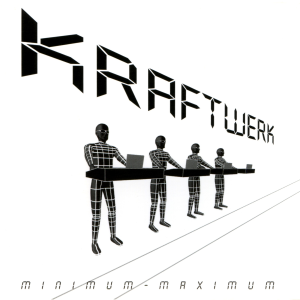Resources to test, install, and run your first instances of Linux and open source software.
deleted by creator
Dual-booting is fine if you have more than one drive.
This, even still, with only one drive, I’ve done it before as a novice, if you rtfm you’ll be fine. Otherwise yeah, just put it on a second drive
I ran dual boot for years with zero issues. Just partition the drive or use two different ones.
Mint and pop are basically ubuntu.
Big difference: Pop, at least, does not push Canonical’s proprietary “Snap” nonsense. You can use it if you really want, but it’s not installed by default. No
snapdon my system, thanks.Mint is also strongly against Snap. The plurality of Mint’s users guide is “Why Snaps are disabled by default.”
Fair point, but that probably wouldn’t be a “big difference” for a first time user.
Sure, but if I were recommending a Linux OS to a first-time user, I wouldn’t recommend today’s Ubuntu as it is likely to lock them into a proprietary single-vendor system, which is contrary to one of the main points of promoting free software.
The first-time user might not immediately notice the difference, but it’s (unfortunately) bad for free software to have more new users starting on today’s Ubuntu.
This is pretty sad because Ubuntu used to be the obvious choice to recommend to new users.
Dual booting is fine if you are using 2 Linux OSes.
If one partition has windows installed an update can hijack the Linux partition or remove the grub.
Old news. I updated Winblows and nothing happened to systemd-boot.
It will depend on the update.
Either way, If I want to have a windows install, it’s either
- in a vm
- on a different physical disk that is kept physically unplugged from the motherboard until it is needed and then I’ll plug it in while unseating the Linux drives and any other drives windows does not need access to
- a different computer
I hate it, basically I have to force myself when I boot into windows to physically disconnect the RJ45 from the back, so it doesn’t replace the boot entries thru an update.
If you have to dual boot, give Windows a separate disk.
For the end user, especially a beginner, there’s 0 difference between them.
Shouldn’t be the other way around? Beginners usually won’t want to install DE’s or other stuff by hand:
-
Linux Mint offers a Windows-like experience with cinnamon out of the box, and has several stuff setup by default like system snapshots and media codecs.
-
Pop!_OS is really appealing visually and very comfortable to use and setup.
-
Ubuntu, well, is Ubuntu. I’m not diving into it.
-
deleted by creator
For someone who has never used Linux it can be very daunting, especially if they have never installed an os.
If you can’t even install an os by reading documentation using linux is just going to frustrate you.
Reading documentation with countless of terms you don’t know is frustrating too. For new users i can recommend using Youtube tutorials installing Linux.
Not every user has to know the inside and outside of the used OS, there are many beginner-friendly distros these days.
I think it’s more about the fear factor. What if something goes wrong? Especially when dual booting. I was so so scared that I might break my system accidentally when I was first installing Mint alongside Windows and doing manual partitioning. I have to tell you, it was quite scary at first, and then it was just frustrating how much space Windows took away from me (when I wasnt evem using Windows) that I wiped it.
This is nice but there are already tons of “how/why to start using Linux” websites. Not sure if we need another one.
I still keep my old Windows disk as a second boot option. Might finally wipe it at some point.
I was scared to install Linux as a daily driver at first. Then Windows Update screwed up my install and I said “Screw it, I’m not installing Windows again”. Basically Windows took the decision to uninstall it for me :)
I’ll probably just keep a Win10 VM if need be.
I use wine most of the time. In extreme cases qemu will do it.
Can you run PhotoShop and such okay?
I haven’t tried Photoshop, but all the Windows apps I’ve used in Linux (mostly games) run seamlessly. Probably you can find a YouTube tutorial for configuring wine for your needs






